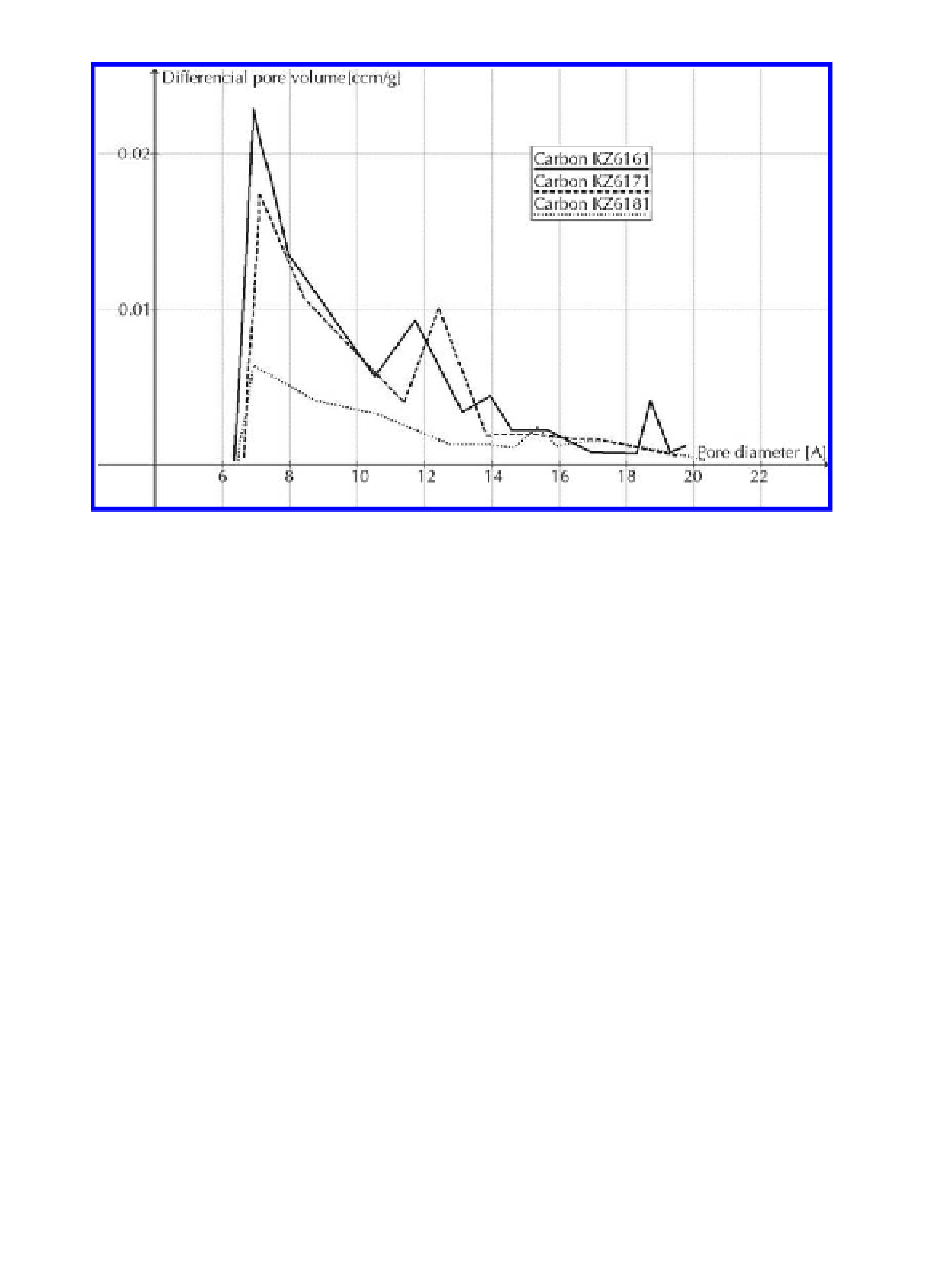Biomedical Engineering Reference
In-Depth Information
Figure 4.
PSD function determined for a series of carbons obtained from
Acer platanoides
. Symbols
6, 7, 8 denote carbonization temperature of 600, 700, 800°C, respectively. The PSD functions
calculated basing from N
2
adsorption data at -196°C and Hortvath-Kawazoe model.
The narrowed PSD in the case of
Salix viminalis
wood-originated carbon occurs in
relatively limited range of carbonization temperatures (600-700°C) and its limited du-
ration (typically 1 hr + 1 hr). More severe carbonization conditions leads to a collapse
of this specific system of pores (Gorska, 2009; Ohata et al., 2008) due to graphitization
of carbon matrix.
The formation of mentioned pore structure of narrowed PSD is not a common
phenomenon that is similar heat-treatment of other sorts of wood often leads to
qualitatively and quantitatively different results (Lukaszewicz et al., 2009). Figure 4
depicts the run of a PSD function determined for carbon obtained from Norway
maple wood (
Acer platanoides)
in identical carbonization process. It is visible that
the maximum of PSD is shifted towards pores of bigger diameter and is bimodal
that is two local maxima exist: the first in sub-nanometer range and the second at
ca. 1.2-1.4 nm.
Pyrolysis of biomass, as well as pyrolysis of
Salix viminalis
wood, yields volatile
products besides the mentioned solid product—active carbon
(Figure 5).
Figure 5 doc-
uments that the proportions between basic products of biomass heat-treatment depend
on process dynamics. High speed pyrolysis prefers the formation of non-condensable
gases while slow carbonizations increase the share of solid product (char or active
carbon).

Search WWH ::

Custom Search